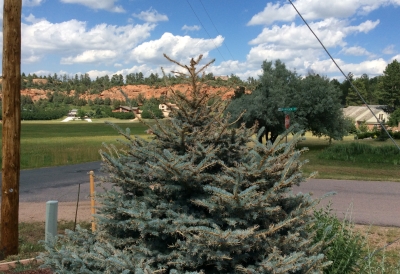Flourishing in forests as far north as British Columbia, as far south as the United States border, as far west as the Pacific coast and as far east as the eastern edge of Colorado, the Douglas-fir tussock moth naturally populates an extensive environment. During years when a large amount of adult females and/or overwintering eggs survive winter, an infestation of Douglas-fir tussock moth larvae threaten to completely defoliate just about any conifer (not just their namesake) in their paths, including Colorado blue spruces, white firs and Ponderosa pines. Controlling the Douglas-fir tussock moth becomes a priority.
Just when forestry experts think they have outbreak cycles figured out, the Douglas-fir tussock moth throws a curveball. Most outbreaks develop, as the U.S. Department of Agriculture’s Forest Service says, “explosively,” and then end after a year or two. But seven-year outbreaks  have been reported in New Mexico.
have been reported in New Mexico.
Outbreaks can be so intense that forest floors seem to move with squirming Douglas-fir tussock caterpillars – pushed off crowded conifer needles or scales by their siblings. Newly hatched larvae feed on a current year’s growth (new growth), but also eat their fill of old growth after all new growth is devoured.
Defoliation starts at the top of a tree and the caterpillars work their way down. An entire tree can be defoliated by mid-summer, depending on its location and the amount of other conifers nearby.
To prevent even a small amount of defoliation, Douglas-fir tussock moth control should begin early in the season, even before the eggs hatch. The female Douglas-fir tussock moth doesn’t fly, so regular checks with binoculars can identify her presence on trees. If a female exists on a tree, eggs will almost assuredly be laid. Treatment can also be applied after larvae feeding begins, but, again, the sooner the better.
Professional control of a Douglas-fir tussock moth infestation is almost always recommended to ensure safety of the technician applying pesticide and safety of nearby humans and animals. If you suspect a Douglas-fir tussock moth infestation on your property, Contact SprayTech, Colorado commercial and residential tree-spraying specialists, at 720-248-0000.
Comments are closed.